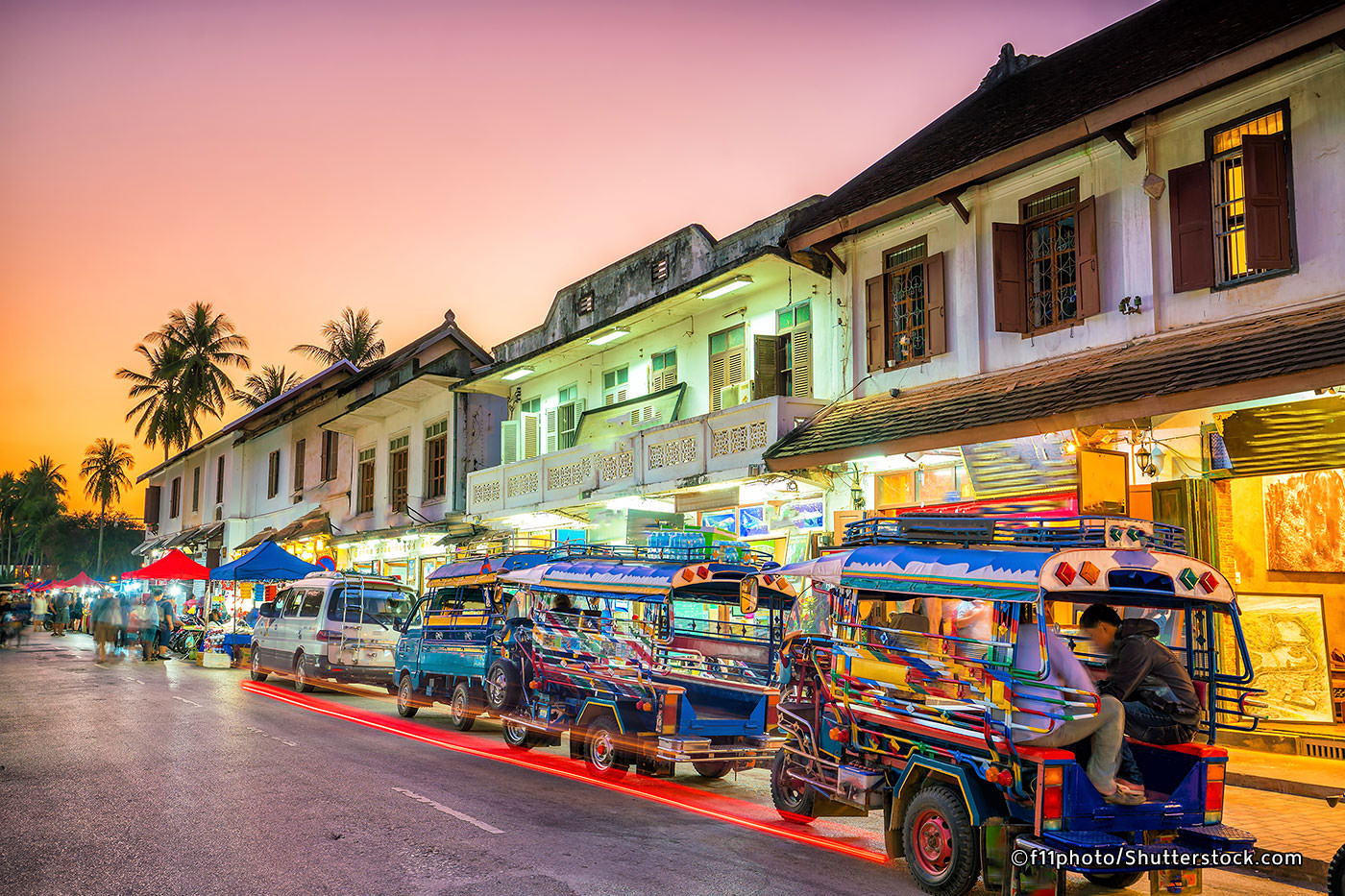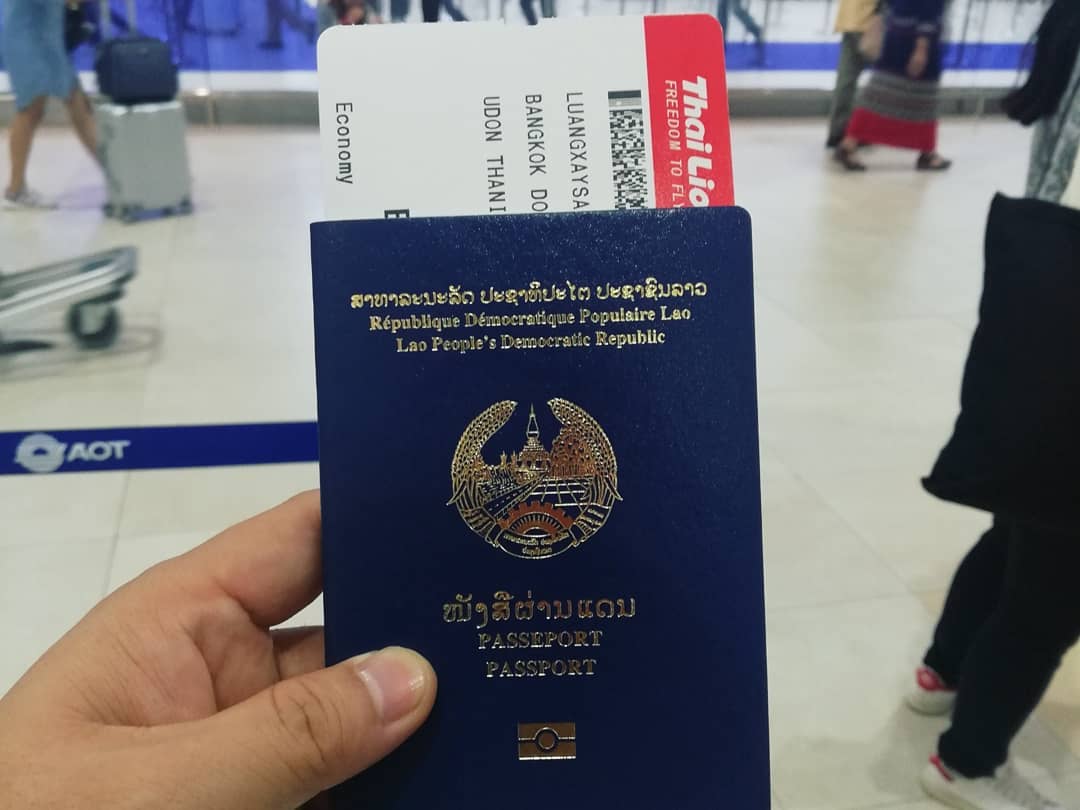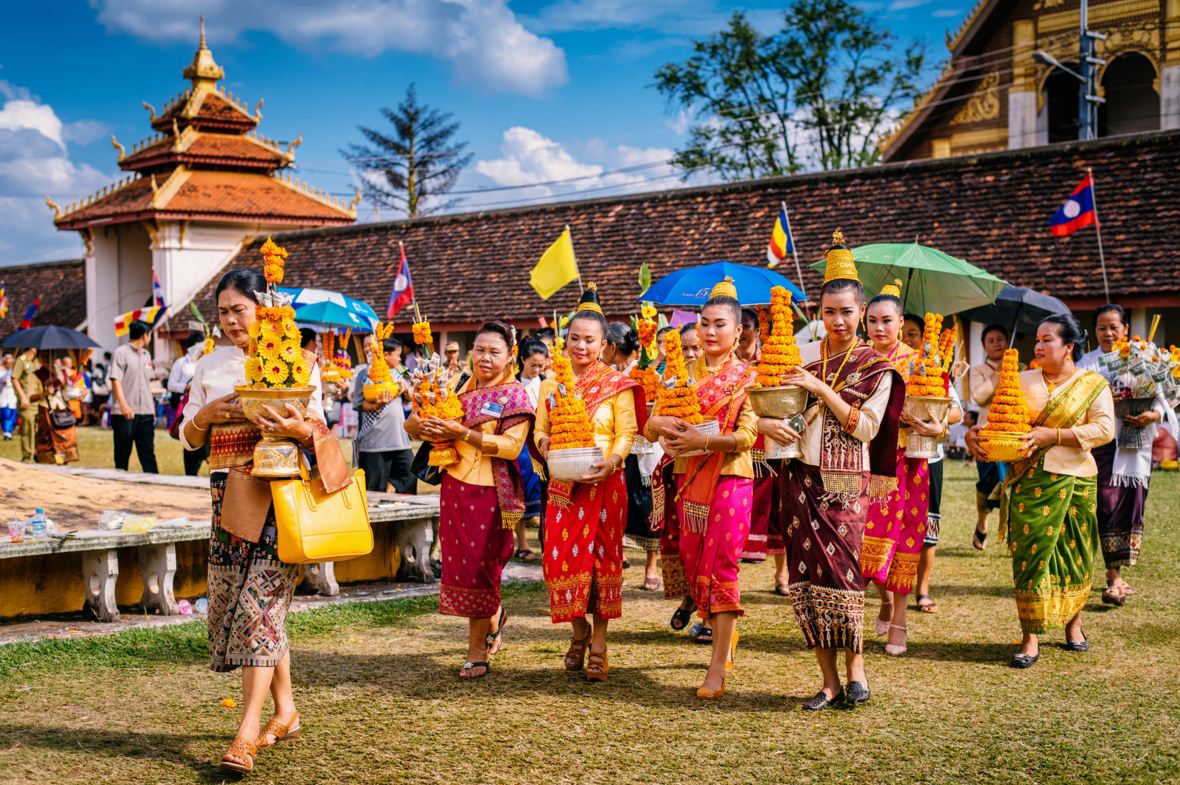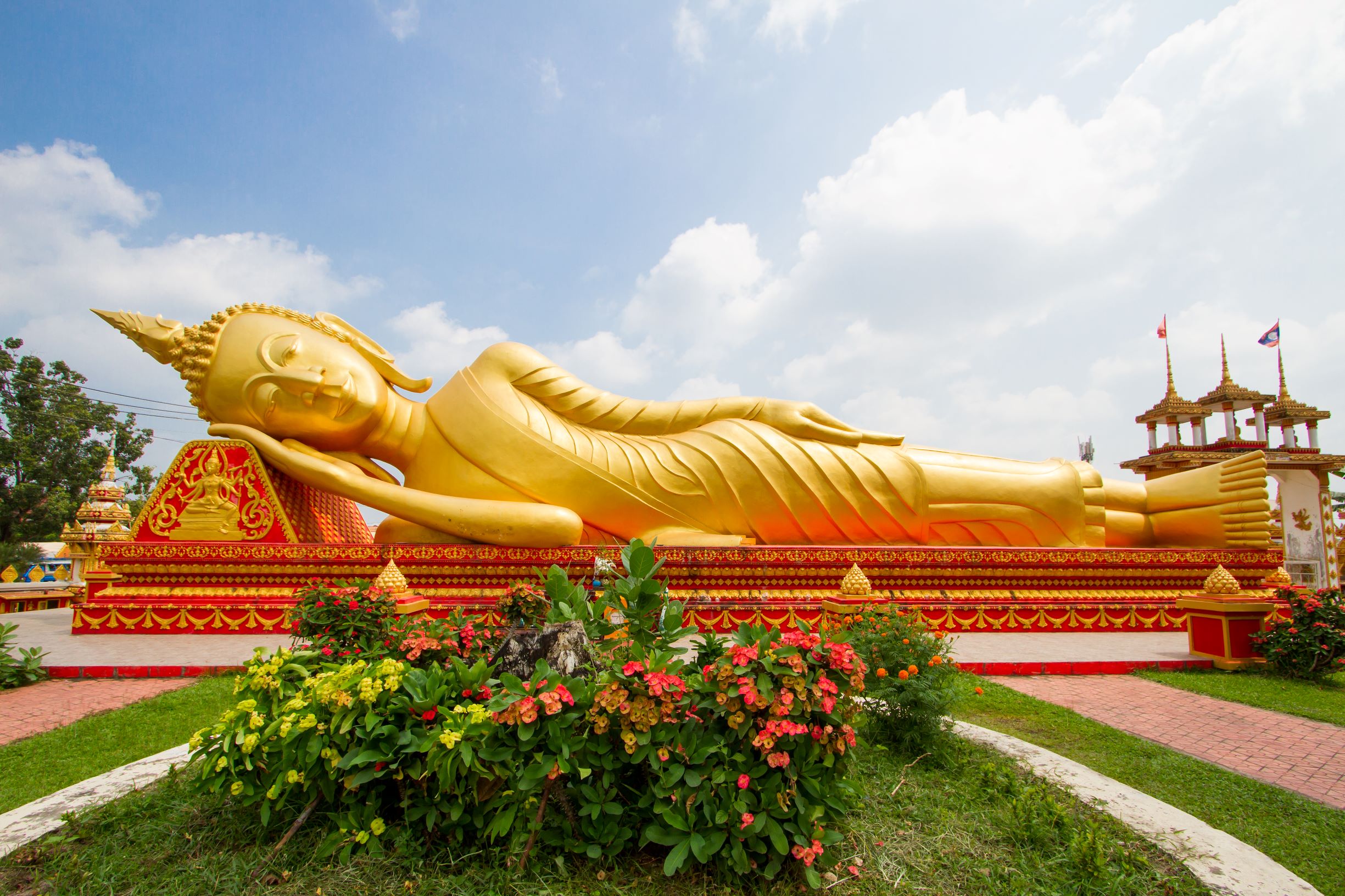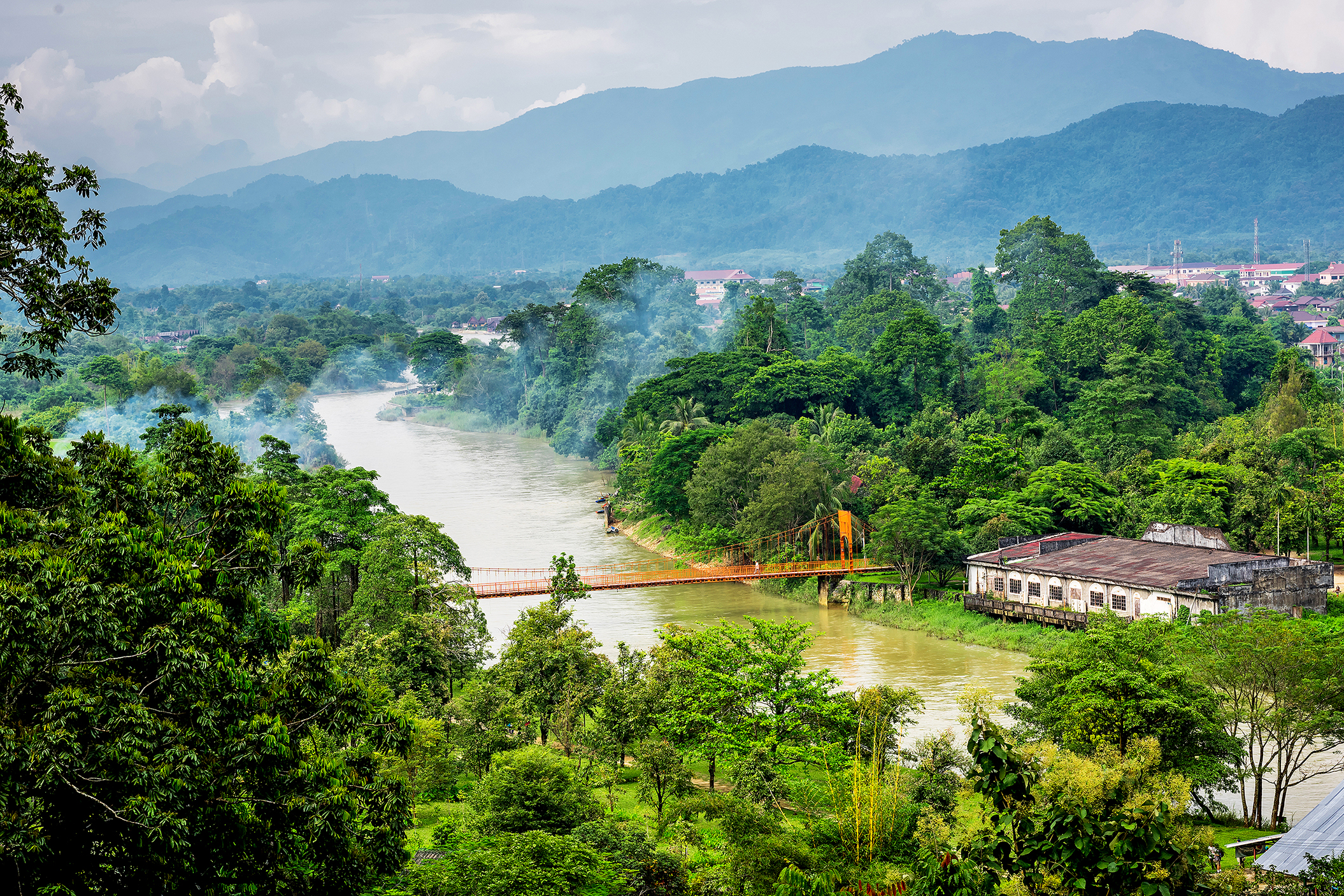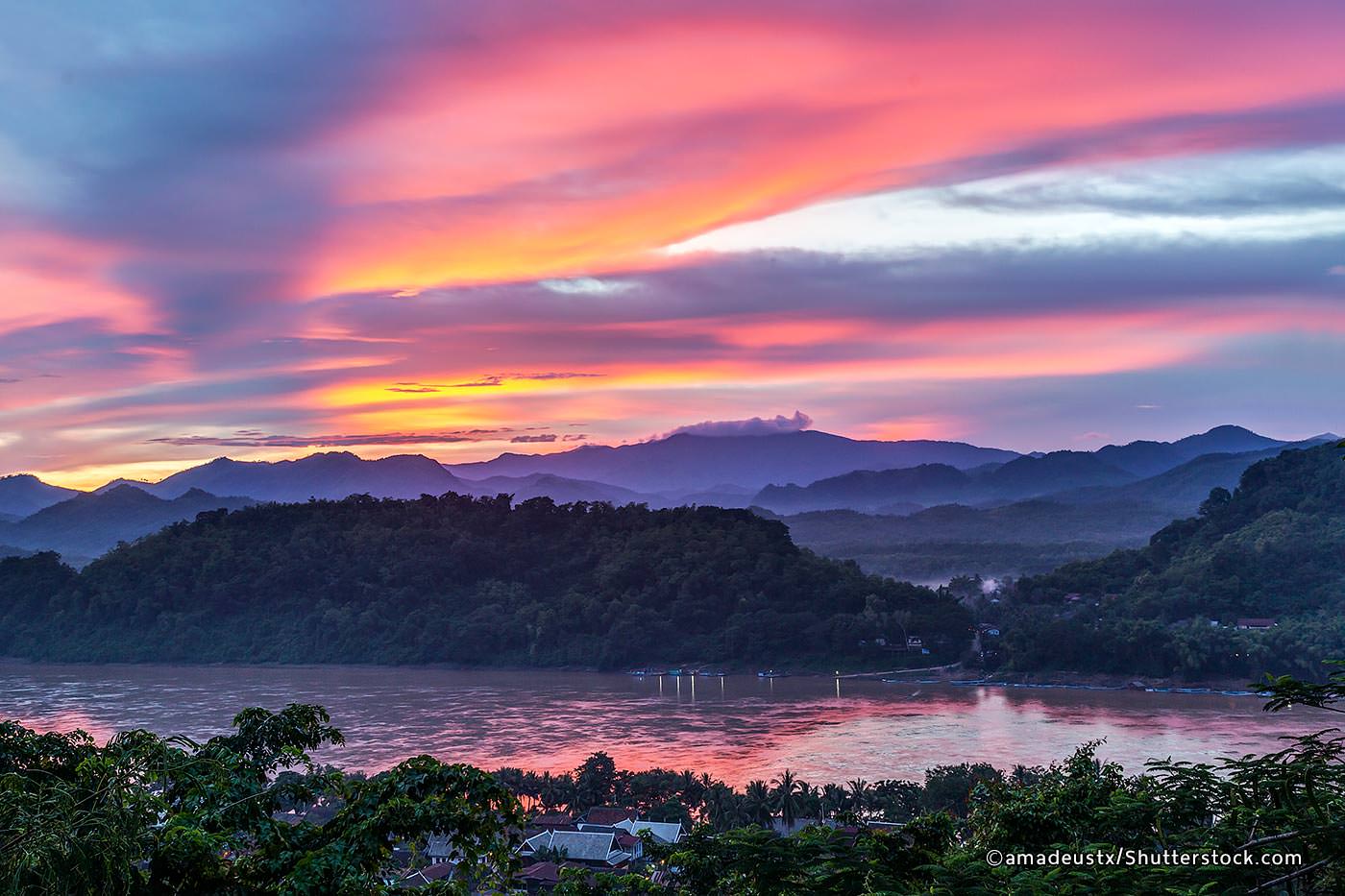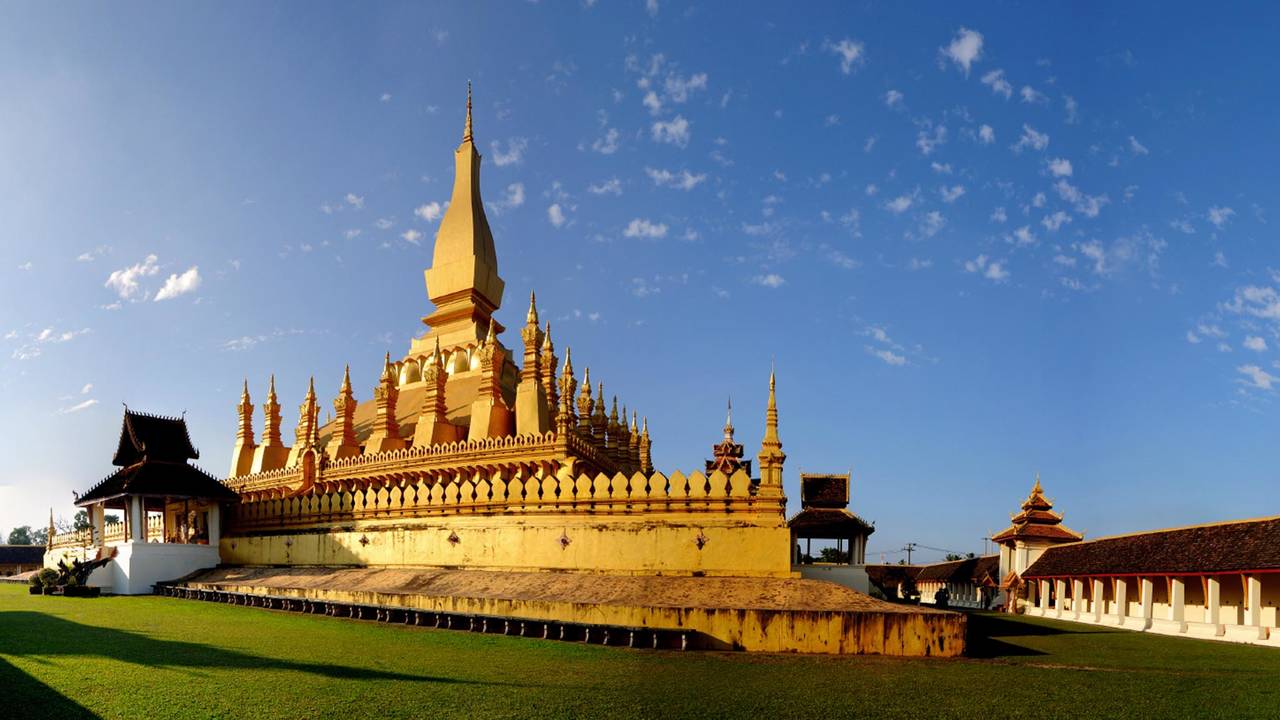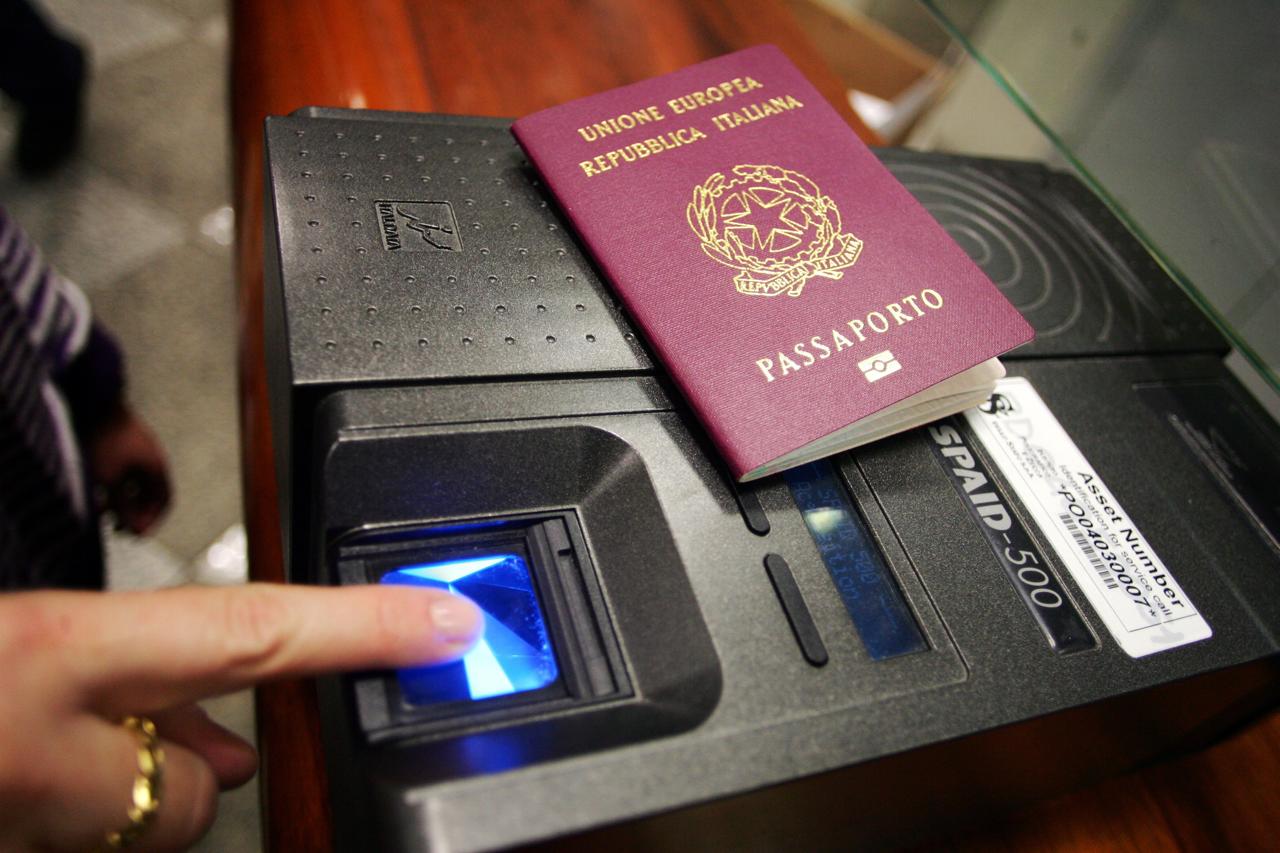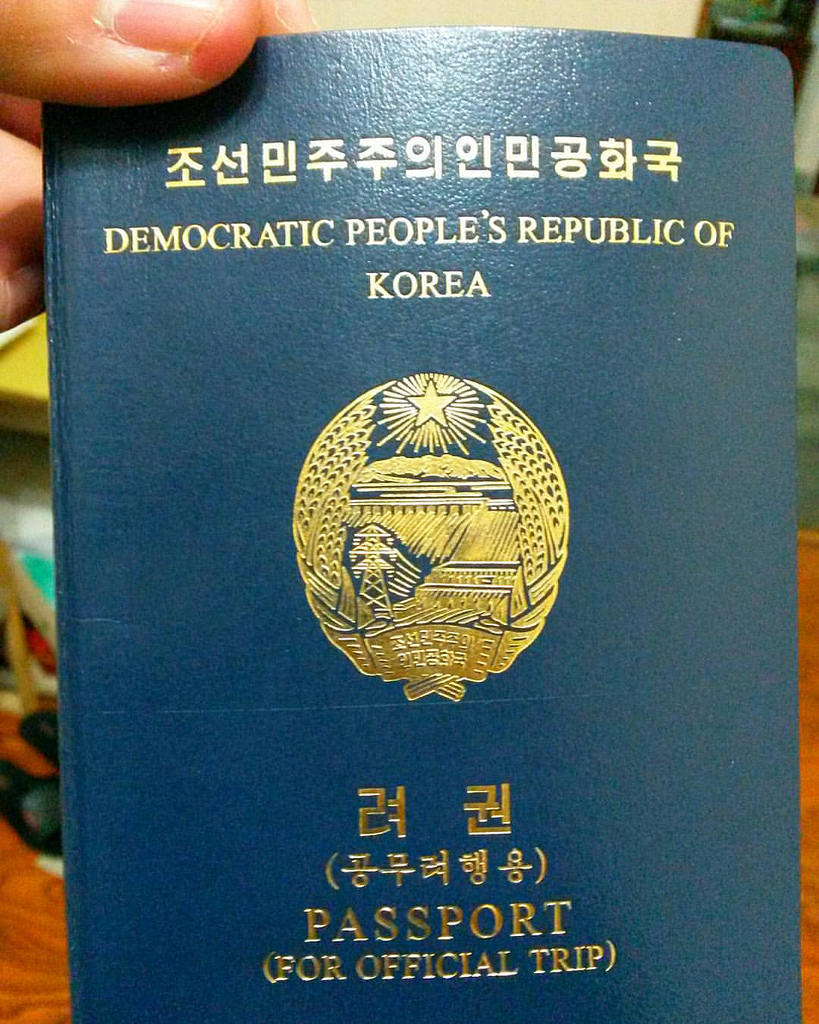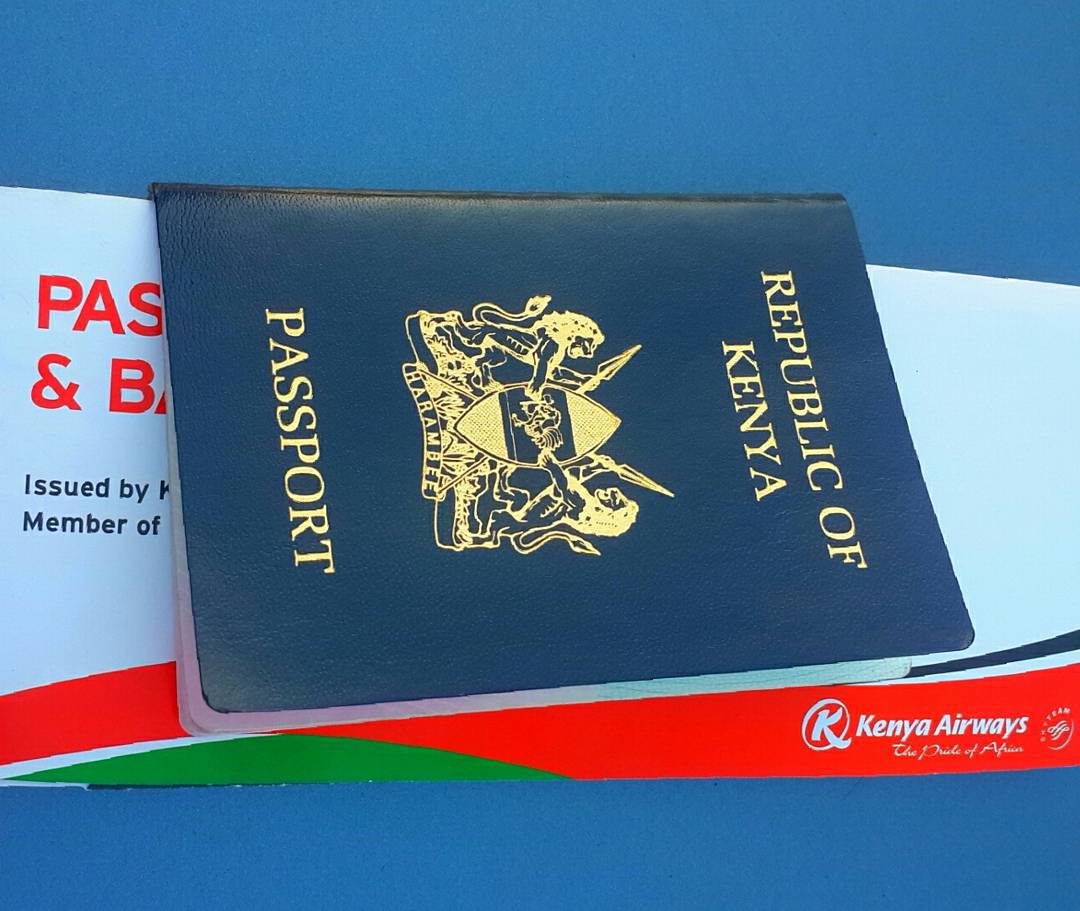Luang Prabang City is a place with no worries—at least for the tourists. The ambiance here is just perfect for enjoying life and relaxing. More so than any other city we had experienced since arriving in Vietnam. The mix of the Laotian culture with the French architectural influence makes it a perfect place to just kick back.
Luang Prabang has been a serious tourist hot spot only since the International Airport was modernized and the runways were extended in 2011. Before then difficult access meant that only backpackers and the most adventurous tourists willing to sit for hours on buses or spend two days on the Mekong River would make it to this city. But now the moneyed travelers can join the backpackers and visit Luang Prabang just like they visit any of the other popular Southeast Asian destinations.
The most popular activity in Luang Prabang is simply walking around the city taking in all the sights and just experiencing the feel of the town itself. The city offers an outstanding example of the fusion of traditional Laos architecture and Laos urban structures with those built by the European Colonial authorities of the 19th and 20th centuries. The city streets are quiet with light traffic with and no large trucks allowed in the ancient historical section.
My wife and I enjoyed combining breakfast with time spent before and after, randomly walking the streets with our curiosity guiding the way. Never knowing what wondrous surprises awaited us next. We always incorporated at least one stop at the Saffron Coffee Shop across the street from the picturesque Mekong River. I especially enjoyed the Coffee Americano for $2.39. After acquiring our coffees, we would take a view seat across the street on the river side watching the random variety of boats peacefully passing by.
The Royal Palace Museum.
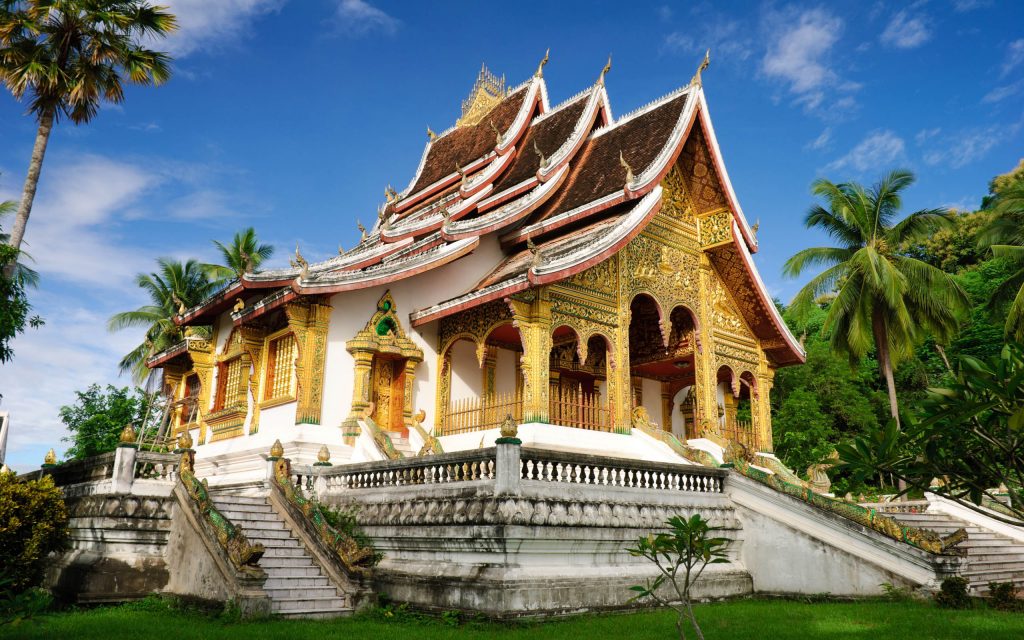
The Royal Palace in Luang Prabang, Laos
The Royal Palace Museum was built in 1904 and had been the former Palace of the reigning King Sisavang Vong. When the war ended and the communist took over the Laotian government in 1975 and it was converted into a museum which it still is to this day. At the time the royal family had been living there and was peacefully deposed by the Pathet Laos. It was a bloodless coup and while they were peacefully removed, they were all sent to the miserable repatriation camps where they unfortunately, all eventually died.
The Wat Xieng Thong
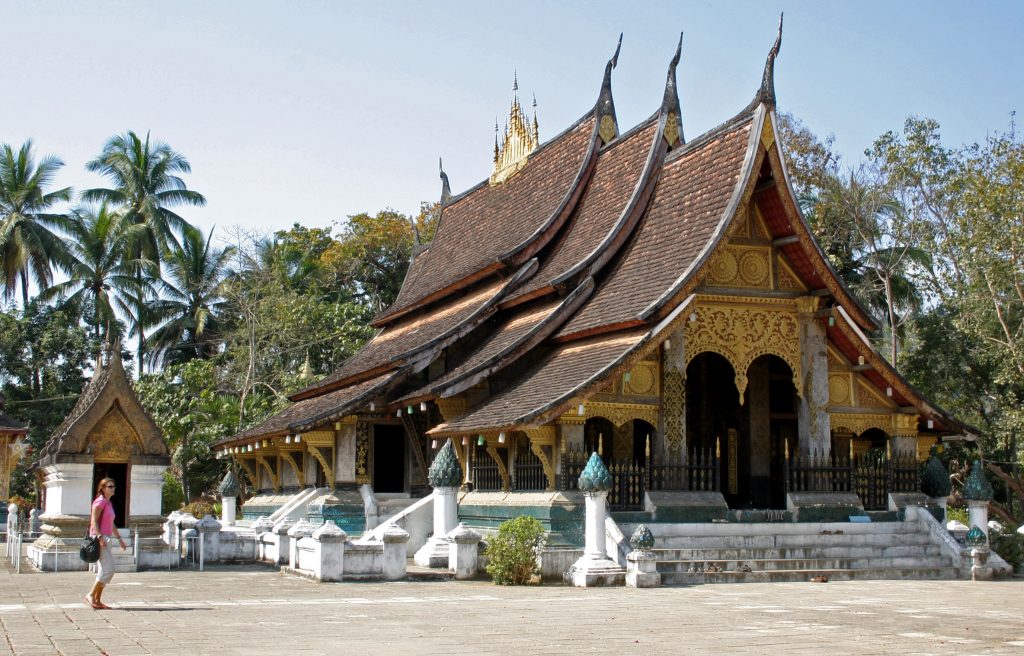
The Wat Xieng Thong is the most beautiful and most visited Wat in Luang Prabang. There are many Wats in the city which collectively are amongst the most sophisticated Buddhist temples in all of Southeast Asia. They are richly decorated with sculptures, engravings, paintings, gold gilding and furniture pieces. The Wat Xieng Thong dates back to the 16th century and comprises an ensemble of 20 buildings making up the most complex assemblage of structures of any of the pagodas to be found in the city. The complex is remarkable both from the archaeological point of view and from the Lao iconographical and aesthetic viewpoint. This wat is the most historically and impressive of the Luang Prabang’s many wats. The main building’s low sweeping double-tiered roof and the rich interior and exterior decoration of its sim create an exceptionally fine example of classic Luang Prabang style. The gold work found throughout the many structures is truly stunning. We loved walking in and amongst these various buildings in the complex on our two visits.
Elephant Village
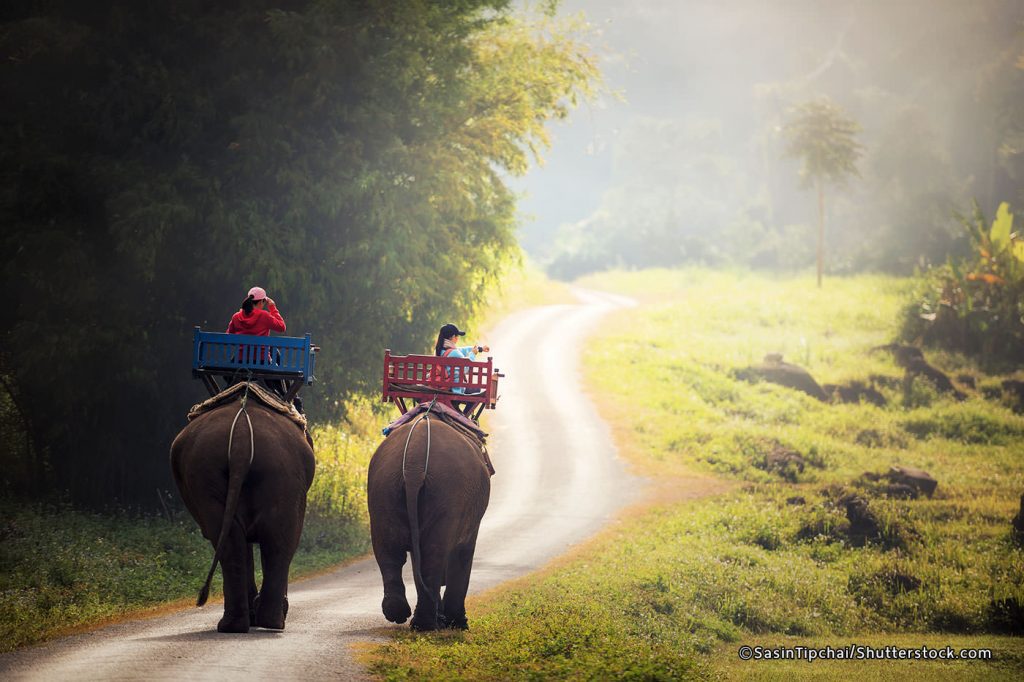
Elephant Village is one of several elephant shelters in the Luang Prabang area that shelters and treats elephants so as to save them from the harsh conditions that has threatened the very existence of the Laotian elephants. The elephant population once measured over a million and today they have virtually are on the verge of extinction.
We were able to spend valuable time with them and their handlers first riding then helping to give them a bath in a pool next to the Mekong River. They are such intelligent and beautiful creatures. I highly recommend that anyone who has the opportunity to visit these wonderful creatures should do so.
Lao Food
In the country of Laos, eating food is the most important activity amongst the locals. It is quite common for the locals to greet each other by asking, “Have you eaten food?” (Kin khao laeo bor?”)
Lao people particularly enjoy sharing traditional dishes with curious travelers. Lao food has been heavily influenced by both China and Thailand.
Ten of the most popular Lao dishes include:
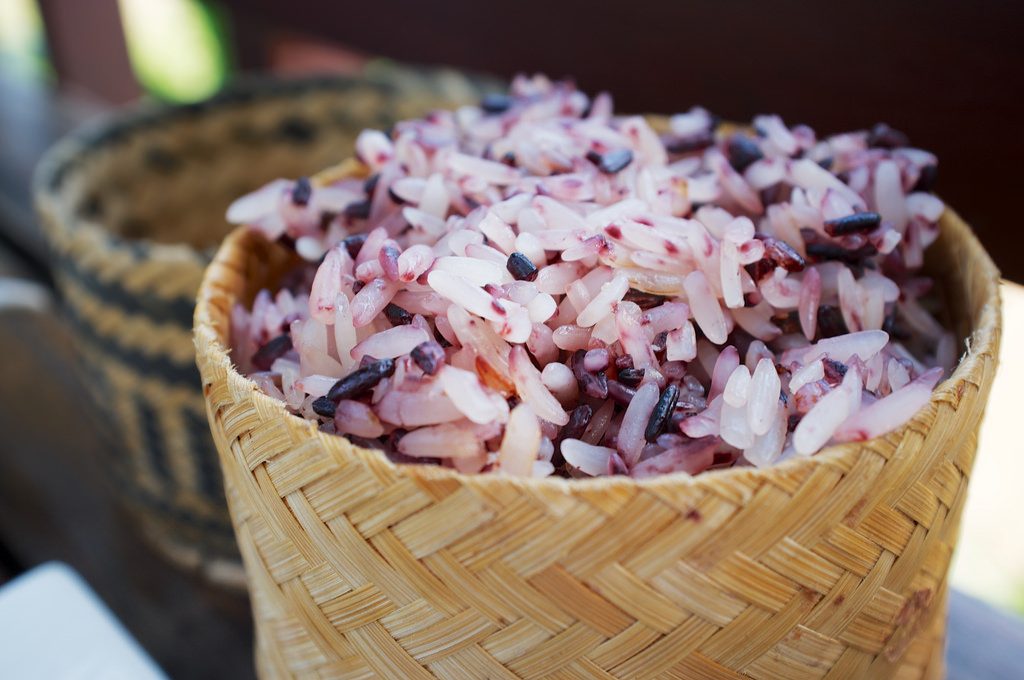
1. Sticky Rice (khao niaw) is the most basic food served with all Lao meals. Traditionally steamed and served in a cone shaped basket.
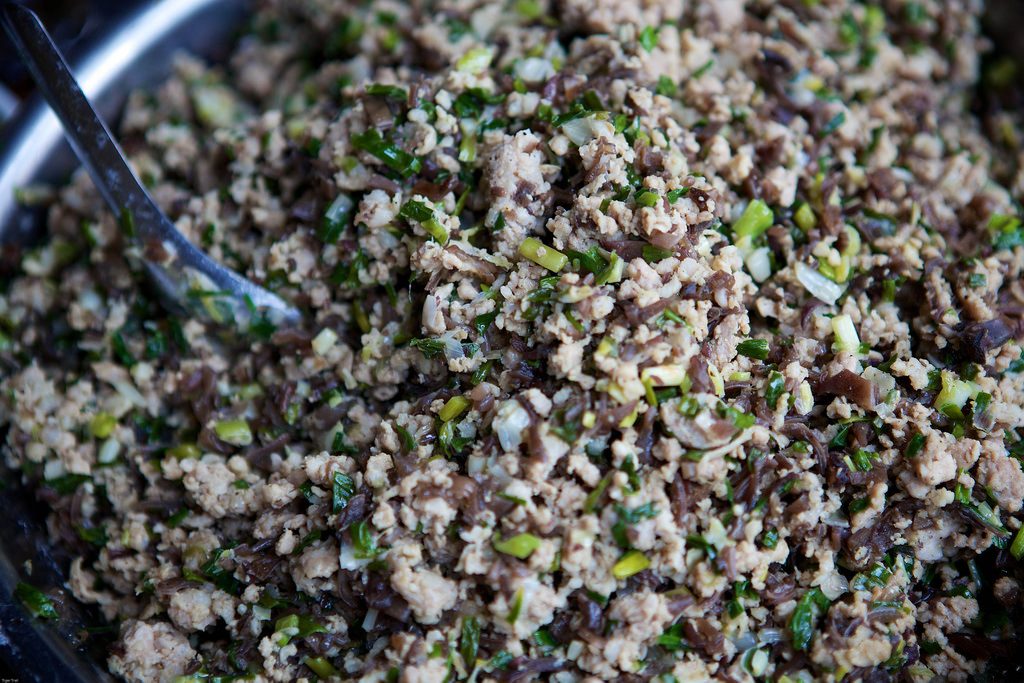
2. Minced Meat Salad (Larb). Larb is considered the national dish of Laos. It is made with your choice of chicken, beef, pork, duck or fish and is flavored with fish sauce and lime.
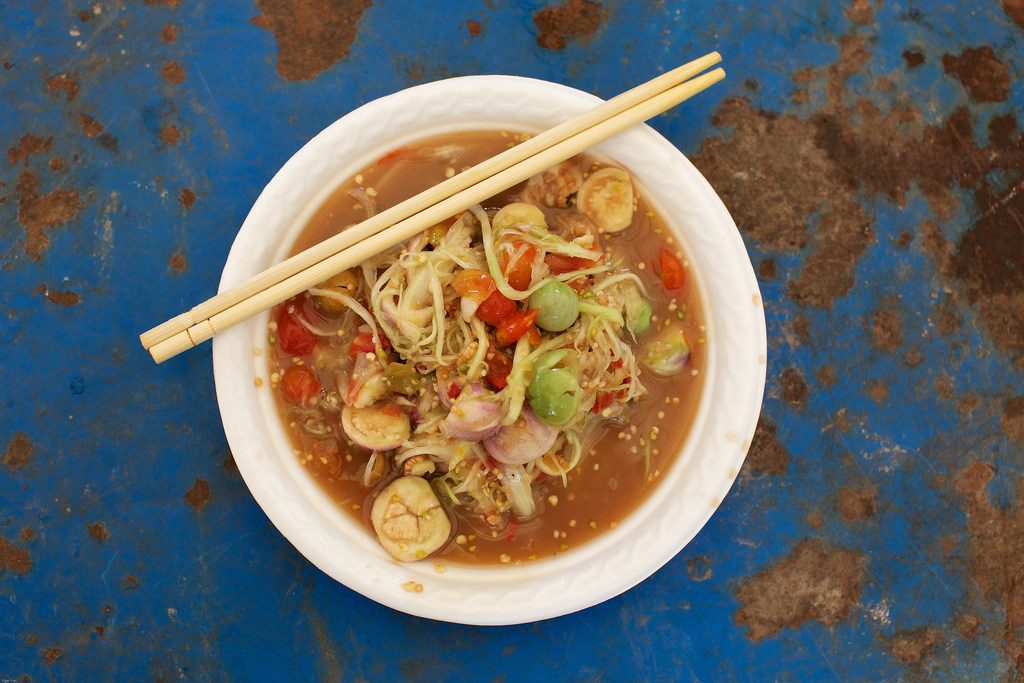
3. Green Papaya Salad (Tam Mak Hong). Made with shreds of unripe papaya and also including lime, garlic, tomatoes, dried shrimp and raw eggplant.
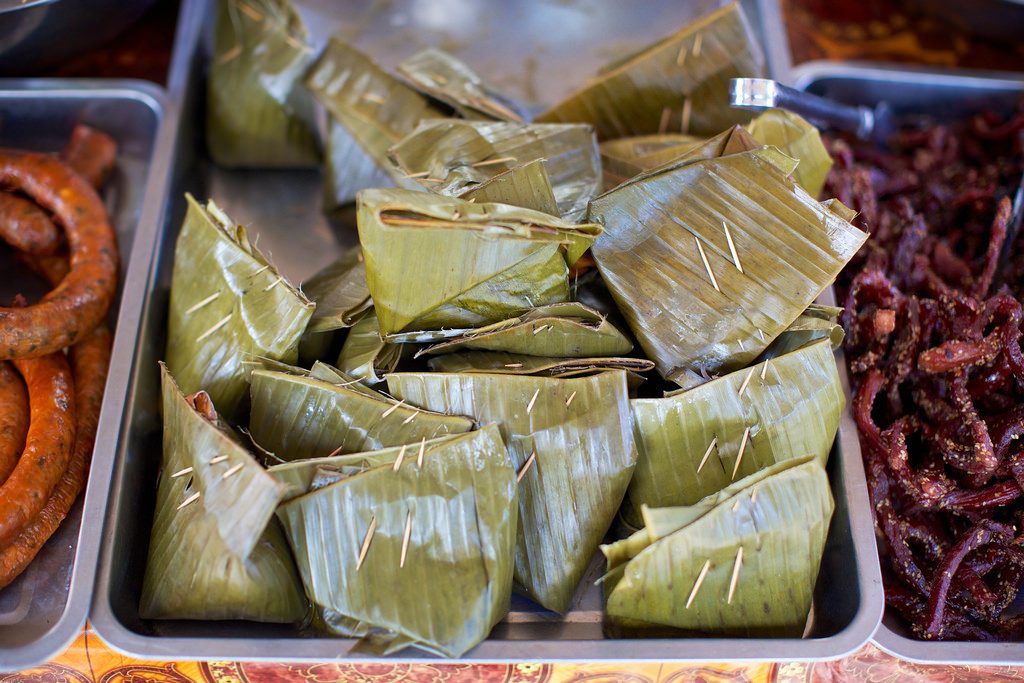
4. Steamed fish (Mok Pa). The steamed fish are wrapped up in banana leaves and tied with a bamboo string. Prepared with lemongrass, kaffirleaves, green onions, fish sauce, shrimp paste and fresh dill.
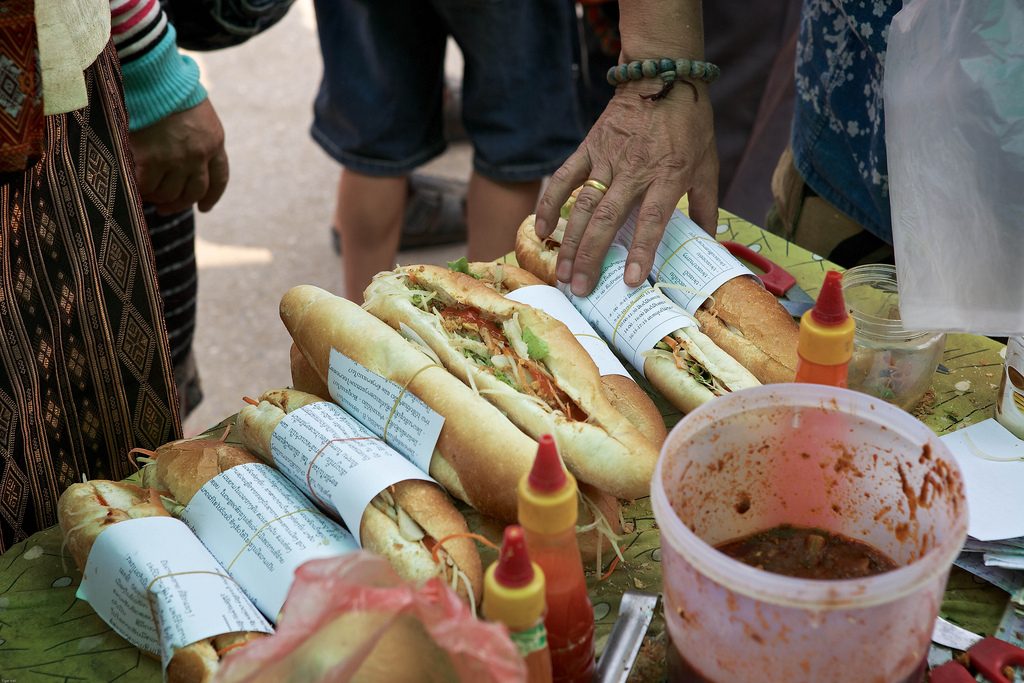
5. Baguette Pate (khao jll pate). Due to the colonial French influence baguettes are found every where and can be purchased separately or with a sandwich.
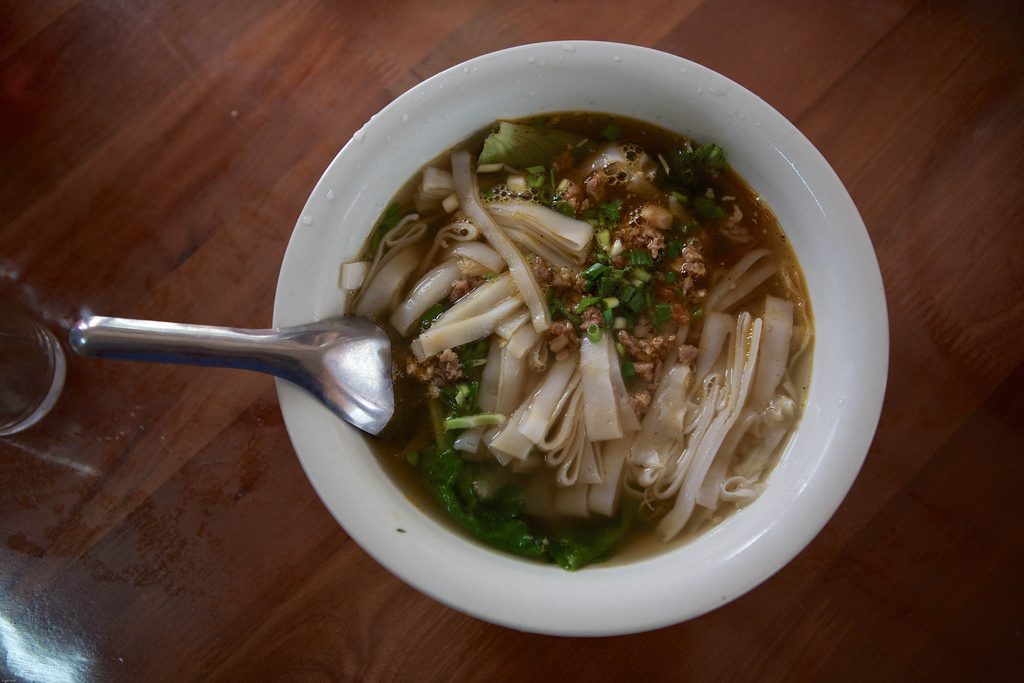
6. Wet Noodles. (kho piak sen) This is a chewy noodle soup that is made with rice noodles instead of wheat noodles. The most crucial factor in making this soup is the broth which needs to be slowly cooked. It typically includes pork or chicken and lemongrass, galangal, shallots, garlic, bean sprouts and freshly sliced limes.
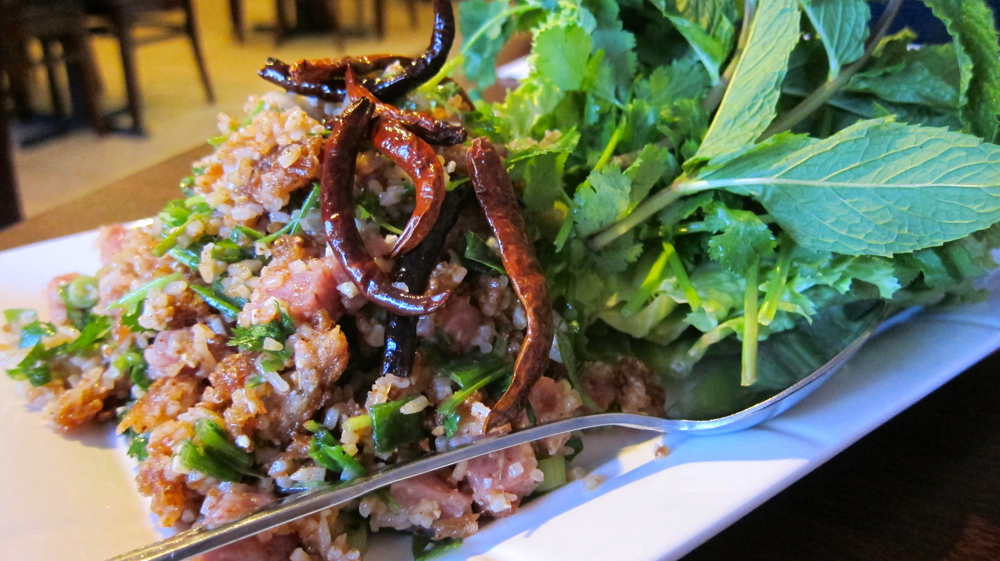
7. Crispy Rice Salad (Naen Khao Toa). A favorite Laotian salad that is made with deep fried rice balls, chunks of soured pork sausage, peanuts, grated coconut, fish sauce and dried chili peppers.
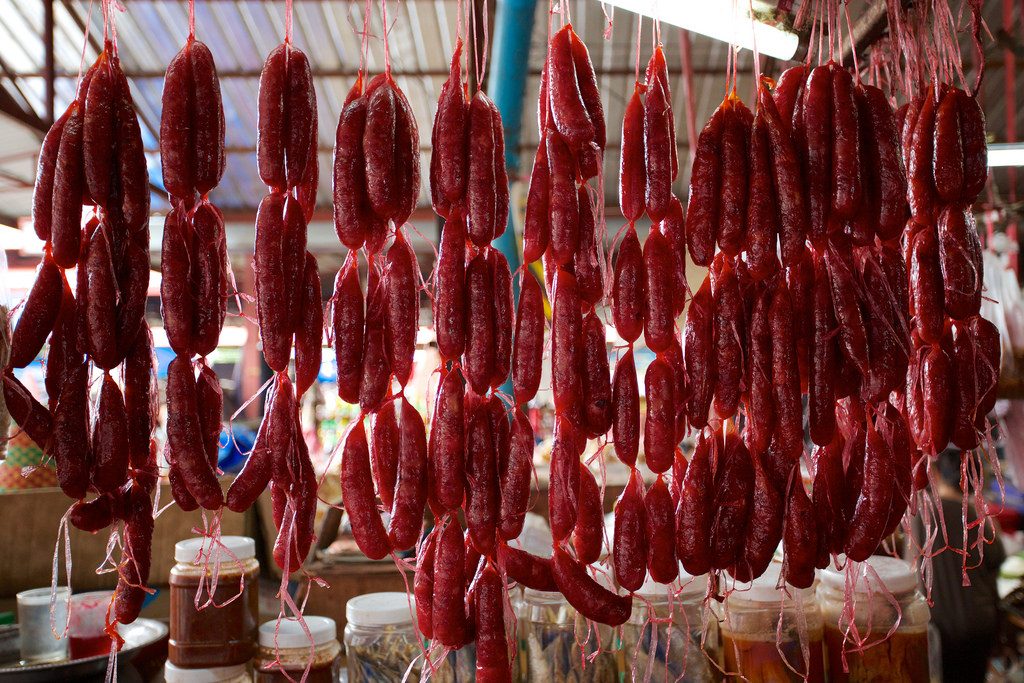
8. Lao Sausages (Sai Uah, Sai Gok). A herb-infused meat unlike any other you’ve ever tasted before. These pork sausages are mixed with lemongrass, galangal, kaffir leaves, shallots, cilantro and fish sauce. Eaten with sticky rice they are fantastic.
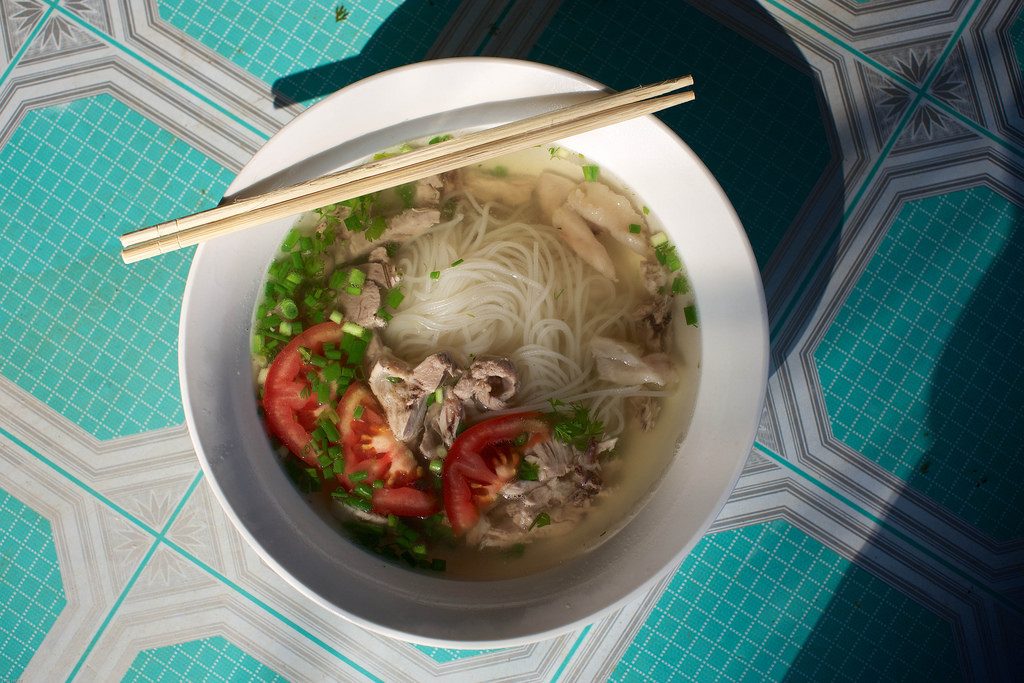
9. Noodle Soup (Phor). Similar to the Vietnamese soup, phu. Served along with a basket of fresh herbs, chilies, limes and bean sprouts. This is the most common Laotian dish which can be found in differing varieties between the North and the South.
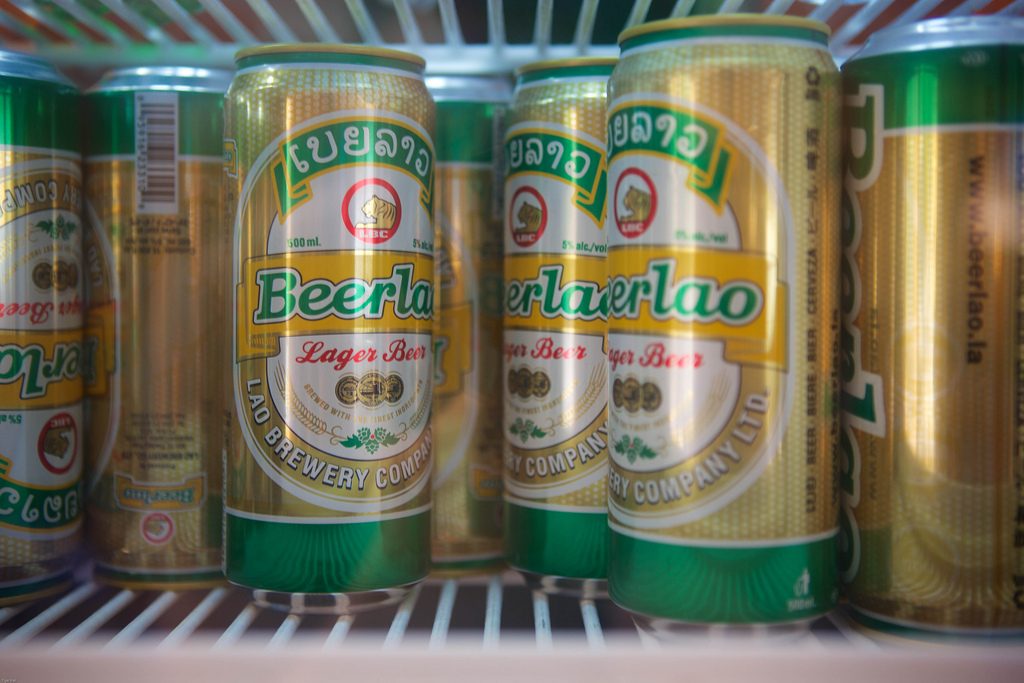
10. Laotian Beer. A favorite drink with everyone.
We really loved eating the food in Luang Prabang. Both the street food and the restaurants were great. We ate in a variety of spots including both the night and the day markets. As well as snaking on fresh fruits and fresh fruit drinks in between our coffee breaks at the Saffron Coffee Shop.
We treated ourselves one night at the French restaurant, L Elephant Restaurant. It was a fantastic meal served in the classical French tradition. It was a great way to celebrate our last night in Luang Prabang.
